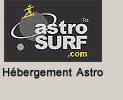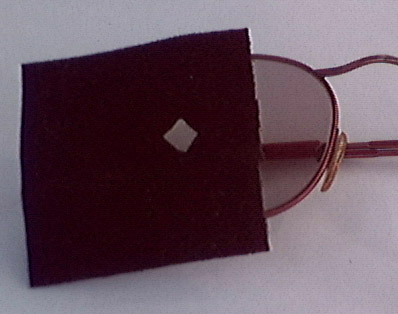
- Theoretical Elements
- SHG with a 115/900
- SHG with 90/1300 refractor (p.1
 )
) - SHG with 90/1300 refractor (p.2
 )
) - Newton 192/950
- Dobson 80/400 'Babydob'
- Ultra-simple solar spectrum
- Misc. electronic layouts
- Misc. optical layouts
- Untransversaliumisator software
- Processing videos software
- "PUSH TO" DIY system

- Radio control RA, Dec & focus

- Focuser 3D pour Vixen 150/750

- Year :
- Synoptic maps :
- Videos
- Maunder's Diagram
- Cycle 23 in images
- Venus Transit 2004
| Baader Astrosolar D5 testing
| ||||
|
Introduction Although the subject was already the object of a detailed
document,
the capacity of astrosolar to filter the UV and IR radiations
is frequently discussed. Method Everybody knows the photochromic glasses, these lenses which darken under the influence of the solar light. This reaction is provoked by the near UV part of the spectrum (300 - 400 nm) which is exactly the one which is questioned for the filter. It does not there need to explain the photochromic glasses right in the sun light to obtain a reaction; They darken even in diffuse light - for example in a well enlightened room or under a parasol - in a brilliant atmosphere where we can stay for a long time without solar glasses and without lack of comfort. Having glasses of this type, I thus used it as detector of UV. The test was made with my Newtonian telescope
equipped with a density 5 astrosolar filter. The useful aperture
was 185 mm and the eyepiece - a 12.4 mm f.l.
- allows to get a small diameter exit pupil while keeping
the light of all the solar disk, thus a maximal concentration of the
beam. One of the photosensitive glasses is unsettled
then fixed at the level of exit pupil of the eyepiece. The telescope
is pointed towards the Sun and the mount follows without problem.
A dark and opaque tissue recovers all the eyepiece and eyepiece-holder
arrea. The telescope followed the Sun during at least
10 mn. The height of the Sun was about 40°. Results
Conclusion The quantity of near UV radiation
going out of a telescope equipped with a full aperture astrosolar
D=5 filter seems to be at very low level, in any cases - for this
optical configuration - sharply lower than that of the ambient diffuse
light. This test can be easily reproduced if you have photochromic glasses.
| ||||
 |

